Definitions
Anyone who falls down the rabbit hole of Shaken Baby Syndrome is quickly confronted with medical and legal terminology that may seem impossibly complex. Taken one at a time, the words begin to make sense.
Search
Filter By Category
Filter By Type

AAP
American Academy of Pediatrics, a professional association.
Abuse
The improper use or misuse of something.
Abusive Head Trauma
(AHT)
AAP definition: An injury to the skull or intracranial contents of an infant or young child (<5 years of age) due to inflicted blunt impact and/or violent shaking.”
Acceleration
Increase in speed.
ACLU
American Civil Liberties Union.
Acute
Severe and sudden in onset, as opposed to chronic.
Adjudication
The making of a formal judgment about a problem or disputed matter.
Admission
A statement acknowledging the truth of something. An admission accepts some connection to the case. A confession, by contrast, is a formal statement acknowledging guilt.
Affirmation
A formal declaration by a person who declines to take an oath.
Aggravating
Increasing the gravity or seriousness of an offense or mistake.
AHT
Abusive Head Trauma.
Alford plea
A plea bargain that allows a defendant to maintain innocence while acknowledging that sufficient evidence exists to persuade a judge or jury to convict. A defendant waives her right to trial and accepts a prison sentence without admitting guilt. This type of plea stems from a 1970 Supreme Court decision, North Carolina v. Alford and is sometimes called a “best interest” plea.
Anomaly
Something that deviates from what is standard, normal or accepted.
Anterior
Situated in the front of the body, nearer the face or forepart.
Apnea
Short-term cessation of breathing.
APSAC
American Professional Society on the Abuse of Children, a nonprofit advocacy organization.
Arachnoid mater (arachnoid)
A delicate, spiderlike membrane surrounding the brain between the dura mater and pia mater.
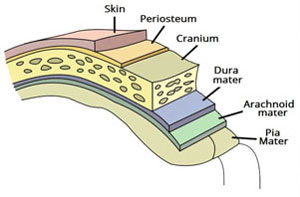
Arraignment
A hearing in which a person is brought before the court to answer a criminal charge by pleading guilty, not guilty, or no contest.
Artery
A red blood vessel that carries oxygenated blood from the heart to tissues and organs in the body. Veins (blue) carry blood from the tissues back to the heart.
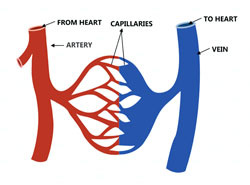
Artifact
Something observed in science, during an autopsy for example, that exists as a consequence of the scientific procedure itself.
ASFA
Adoption and Safe Families Act
Association
A connection or link. Association does not necessarily imply causation.
Asymptomatic
Showing no symptoms.
Atrophy
Waste away, typically due to the degeneration of cells.
Axon
A long, threadlike projection of a nerve cell that conducts electrical impulses from cell to cell.
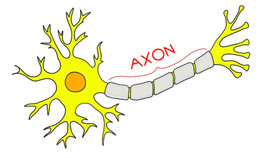
Baby
A child up to about a year of age.
Bench trial
A trial in which there is no jury and the judge alone is the trier of fact. Defendants have the right to a jury trial but can waive that right by choice.
Benign
Not harmful.
Benign enlargement of the subarachnoid space
(BESS)
A condition in which an infant’s head is abnormally large due to a buildup of cerebrospinal fluid beneath the arachnoid and above the pia mater.

BESS
Benign enlargement of the subarachnoid space.
Best-interest plea
See Alford plea.
Bilateral
Affecting both sides.
Biomechanics
The study of the effects of forces on the body.
Blunt force trauma
Injuries from a blunt object, rather than something sharp or penetrating.
Brainstem
The central trunk of the brain which continues downward to form the spinal cord.
Bridging veins
(BV)
Veins that carry blood from the subarachnoid space across the subdural space into the dural venous sinus.

Burden of proof
A legal standard that requires evidence to demonstrate a claim. There are three levels of burden of proof: 1. Beyond a reasonable doubt, 2. Preponderance of the evidence, 3. Clear and convincing evidence.
BV
Bridging veins.
CAP
Child Abuse Pediatrician.
Capillary
Small blood vessels in the body that transfer nutrients and oxygen from the blood to the cells.

CAPTA
Child Abuse Prevention and Treatment Act.
CAT
Computed axial tomography.
Causation
The action of causing something. Causation requires association, but association does not necessarily imply causation.
Cause of death
(COD)
The medical disease or injury that caused a death, such as cancer or traumatic brain injury.
CDC
Centers for Disease Control, a United States federal agency.
Cerebral
Pertaining to the principal part of the brain, which consists of two hemispheres separated by a fissure (midline).
Cerebrospinal fluid
(CSF)
A clear, colorless, watery fluid that flows in and around the brain and spinal cord. It acts as a shock absorber or cushion to protect the brain.
Cervical medullary junction
The junction between the base of the skull/brain stem and the spinal cord.
Child
A person between birth and puberty.
Child abuse
Behavior that harms a child.
Child Abuse Pediatrician
(CAP)
A doctor with special training and certification in evaluating children who may have been abused or neglected. Child Abuse Pediatrics became a subspecialty of pediatrics in 2009.
Child neglect
Failure to provide a child with things they need such as food or shelter.
Chronic
Persisting for a long period of time or constantly recurring, as opposed to acute.
CIFS
Center for Integrity in Forensic Sciences, a nonprofit organization.
Circular reasoning
An argument that comes back to its beginning without proving anything.
CIU
Conviction Integrity Unit, a division of a prosecutorial office that works to prevent, identify and correct miscarriages of justice. The first CIU was established in Dallas, Texas in 2007. There are currently more than 100, with new ones being formed every year.
Classic metaphyseal lesion
(CML)
A term first used by Dr. Paul Kleinman in 1986. He hypothesized that CMLs represented unique indications of abuse in infants.
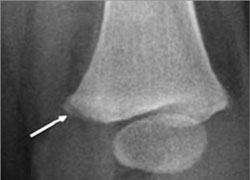
Clinical
Relating to observation and treatment of actual patients as opposed to theoretical or laboratory studies.
CML
Classic metaphyseal lesion.
COCAN
Council on Child Abuse and Neglect, affiliated with the American Academy of Pediatrics.
COD
Cause of death.
Commute
Reduce a sentence to one less severe, a death to a life sentence, for example.
Compensate
To award money to someone for the losses they suffered due to a wrongful accusation.
Computed tomography
(CT)
A computerized x-ray imaging procedure that allows doctors to image soft tissue as well as bones. CAT means “computed axial tomography” but is the same imaging test.
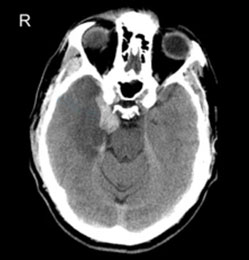
Confession
A formal, generally written, statement admitting that one is guilty of a crime.
Congenital
A disease or physical abnormality present from birth.
Consensus
General agreement.
Consistent with
In agreement with other facts. “Consistent with” does not necessarily mean “caused by.”
Constellation
A set of medical findings that fall into or appear to fall into a pattern.
Contusion
Bruise.
Conviction Integrity Unit
(CIU)
A division of a prosecutorial office that works to prevent, identify and correct miscarriages of justice. The first CIU was established in Dallas, Texas in 2007. There are currently more than 100, with new ones being formed every year.
Coroner
An official who investigates violent, sudden or suspicious deaths. Coroners are generally elected.
Coroner’s inquest
A special jury which investigates a suspicious death and reports to the coroner.
Correlation
A relationship or connection between two or more things.
CPS
Child Protective Services.
CPT
Child Protection Team.
Credible
Believable, convincing.
CSF
Cerebrospinal fluid, a clear watery liquid that flows in and around the brain and spinal cord.
CT
Computed tomography.

CV
Curriculum vitae, a brief account of a person’s education, qualifications and previous experience.
DAI
Diffuse axonal injury.
Daubert hearing
A hearing to determine the admissibility of expert witness testimony. Under the Daubert standard, evidence must be both relevant and reliable to be admissible in court.
Debunk
Expose the falseness or hollowness of, show that something is less true than it has been made to appear.
Deceleration
Decrease in speed.
Diagnosis
v. The act of identifying a disease from its signs and symptoms. n. The name of a disease that has been diagnosed.
Differential diagnosis
(DDx)
A list of possible diagnoses that match the medical findings. Doctors may order tests to rule in or rule out items on the list.
Diffuse
Spread out over a large area, not concentrated.
Diffuse axonal injury
(DAI)
A type of traumatic brain injury caused by rapid acceleration / deceleration. Vehicle accidents are a common cause of DAI.
Dogma
A principle or set of principles laid down by an authority as incontrovertibly true.
Dura mater (dura)
A tough wrapping of tissue between the skull and the brain. Dura mater is Latin for “tough mother.”

Edema
Swelling caused by a buildup of fluid around body tissues or organs.
Encephalopathy
A disease in which the functioning of the brain is affected by some agent or condition such as viral infection, brain swelling, toxins, etc.
Epidemiology
A branch of medicine dealing with the incidence, distribution and possible control of diseases and factors relating to health.
Epidural
Above the dura, below the skull.

ER
Emergency room.
Etiology
The cause of a disease or condition.
Evidence
Information given to prove or disprove a fact. The trier of fact (judge or jury) decides disputed facts on the basis of evidence.
Exculpatory
Showing innocence.
Exoneration
Officially and completely cleared of guilt, declared to be innocent.
Exoneree
A person who has been exonerated, cleared of a crime.